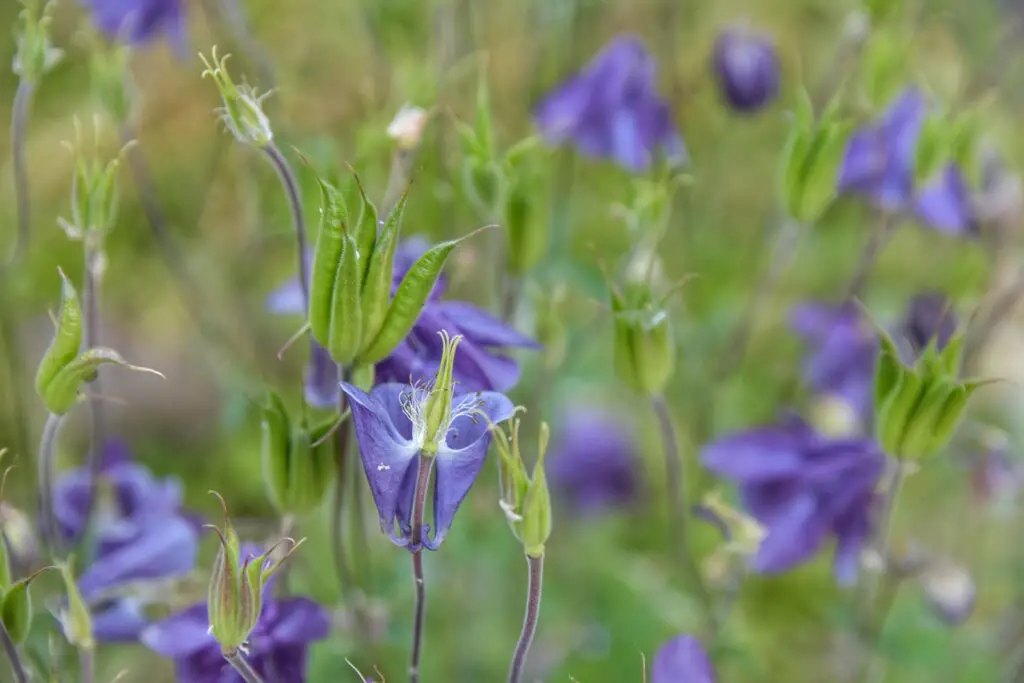Have you heard of the butterfly pea flower? This vivid blue flower is not just a pretty face. It is packed with antioxidants and other beneficial compounds that can do wonders for your health. You’re probably familiar with the flower that colors foods and beverages a bright blue hue, but it is much more than a natural food dye.
The butterfly pea flower, or Clitoria ternatea, has been used in Ayurvedic medicine for centuries to treat various ailments. Modern research has found that drinking butterfly pea flower tea or consuming the flower’s extracts can reduce inflammation in the body, improve memory, support eye health, and even help fight off cancer cells. Butterfly pea flowers’ antioxidant power can help slow cell aging and neutralize harmful free radicals that can lead to disease.
Next time you see a butterfly pea flower tea, latte, or cocktail on a menu, you must try it. Not only will you be rewarded with a stunning blue drink, but you’ll also reap the many benefits of this superfood flower. Your body and mind will thank you for it. Who knew such a delicate little flower could be so assertive? Butterfly pea flower may be your new favorite natural remedy.
What Is Butterfly Pea Flower?
The butterfly pea flower, Clitoria ternatea, is native to tropical Asia. This vibrant blue flower has been used for centuries in Ayurvedic medicine and Thai cuisine. Beyond its striking color, the butterfly pea flower offers impressive health benefits.
Nutrient Powerhouse
These dazzling flowers are high in antioxidants like anthocyanins, which give them their deep blue hue. Antioxidants help neutralize harmful free radicals and may help reduce the risk of some diseases. The flowers also contain other beneficial compounds like glycosides, flavonoids, and sterols.
Supports Brain Health
The anthocyanins in butterfly pea flowers have neuroprotective effects and may even boost cognitive functions like memory. Some research shows the flower could help prevent cognitive decline and neurodegenerative diseases like Alzheimer’s and Parkinson’s.
Promotes Restful Sleep
The calming properties of butterfly pea flowers may help alleviate anxiety and promote sleep. Consuming an infusion from the flowers before bed may help you fall asleep faster and sleep more soundly.
Natural Anti-Inflammatory
Butterfly pea flowers have potent anti-inflammatory effects and may help reduce inflammation. This can help relieve joint or muscle pain and may even help manage chronic inflammation. The flowers’ anti-inflammatory properties and their antioxidant content could help lower the risk of some cancers and other inflammation-related diseases.
With so many benefits in one vibrant flower, adding butterfly pea flower to your diet is an easy way to support better health and well-being. Brew the dried flowers in hot water for a soothing herbal tea, or add the flowers to salads for a pop of color and nutrition. However you enjoy them, butterfly pea flowers are one superfood you’ll want to get your hands on.
Health Benefits of Butterfly Pea Flower Tea
The butterfly pea flower isn’t just a pretty bloom — it’s also packed with benefits for your health and well-being. Here are the top 15 reasons to drink butterfly pea flower tea:
Improved Brain Function
The anthocyanins in butterfly pea flowers act as antioxidants that can help boost cognitive functions like memory, learning, and problem-solving skills. Regular tea consumption has also been shown to help reduce the risk of neurodegenerative diseases.
Reduced Inflammation
The anti-inflammatory effects of butterfly pea flower tea may help ease symptoms from conditions like arthritis, asthma, or skin irritation when consumed regularly. The tea is also great for relieving headaches and menstrual cramps.
Stress and Anxiety Relief
The calming properties of butterfly pea flower tea can help lift your mood and reduce stress levels. The tea contains apigenin, an antioxidant that binds to specific receptors in your brain that may promote relaxation and help ease anxiety.
Improved Vision
The anthocyanins in butterfly pea flowers act as antioxidants that can help support eye health and may even help reduce the risk of vision disorders like cataracts or macular degeneration.
Better Heart Health
Butterfly pea flower tea may help lower high blood pressure and high cholesterol levels, two factors that can lead to heart disease if left unchecked. The tea’s anti-inflammatory effects can also help improve circulation and blood flow.
With many benefits for the body and mind, butterfly pea flower tea should be a staple in your daily wellness routine. Brew a pot and drink up — your health will thank you.

Using Butterfly Pea Flower as a Natural Food Coloring
Butterfly pea flower isn’t just a pretty bloom—it has some fantastic benefits when used as a natural food coloring and supplement.
Coloring Foods and Drinks
The butterfly pea flower creates a vivid blue color when steeped in water. Add the strained extract to foods and drinks for a fun pop of color. Some ideas:
- Add a few drops to lemonade or cocktails for an eye-catching purple hue. The pH change from the citrus juice alters the color.
- Use in place of artificial blue food coloring when baking cupcakes, cookies, or rice krispie treats.
- Create colorful yogurt parfaits or chia puddings by layering the extract with yogurt or milk and your favorite toppings.
- Add a few drops to smoothies, oatmeal, pancake, or waffle batter. The color will be more intense the more extract you add.
The natural colorant is pH-sensitive, so different pH levels produce shades like blue, purple, pink, and red. Have fun with it, and see what colors you can create! The extract is all-natural and plant-based, so it’s a safe alternative to artificial dyes.
Health Benefits
Butterfly pea flowers are not only colorful but also nutritious. They are highly antioxidants, providing many skin, hair, and health benefits.
- The anthocyanins that give the flower its blue hue are antioxidants that help fight free radicals and may help reduce inflammation.
- Traditional Thai medicine has used butterfly pea flowers to promote hair growth and treat hair loss.
- They contain compounds like quercetin and proanthocyanidins, which may help support heart and eye health.
Steep the dried flowers in hot water to make an herbal tea. The tea has an earthy, floral flavor and a stunning blue color. Drink a few cups per week to reap the benefits of this nutritional powerhouse. Butterfly pea flower is a natural way to add color and nutrition to your life.
Butterfly Pea Flower Recipes to Try
Butterfly pea flower tea, rice, and noodles are easy and delicious ways to incorporate this healthy blue flower into your diet. Try these recipes to experience the antioxidant power of butterfly pea flowers.
Butterfly Pea Flower Tea
Making butterfly pea flower tea is extremely simple. Take 1-2 tablespoons of dried butterfly pea flowers and steep in hot water for 10-15 minutes. Strain and enjoy! The tea has an earthy, floral flavor and a stunning blue color. For extra flavor, you can add honey, lemon, or mint. This antioxidant-rich tea provides anti-inflammatory effects and may improve memory.
Butterfly Pea Flower Rice
To make this show-stopping blue rice, rinse 1 cup of rice, then soak in a pot of water with 1/4 cup of dried butterfly pea flowers for at least 2 hours or overnight. Drain, discarding the flowers. Cook the rice as usual. The rice will turn blue from the butterfly pea flower’s anthocyanins. This rice is not just visually stunning but provides antioxidants like quercetin. Serve the blue rice with coconut milk, mango, and cashews for a bright, tropical dish.
Butterfly Pea Flower Noodles
Cook udon, ramen, or rice noodles according to package directions. Drain, reserving 1/2 cup of the cooking water. Combine the noodles, two tablespoons of coconut milk or coconut cream, two tablespoons of the reserved cooking water, and a handful of dried or fresh butterfly pea flowers in a bowl. Gently toss to combine and let sit until the noodles turn blue about 5 minutes. Remove the flowers before eating. These butterfly pea flower noodles are packed with antioxidants and natural pigment, giving them an otherworldly indigo color. Top your noodles with tofu, bell peppers, or bean sprouts.
With their exotic blue color and antioxidant benefits, butterfly pea flower recipes are a great way to give your diet a nutritious and Instagram-worthy boost. Mixing the dried flowers into rice, noodles, tea, and more makes it easy to enjoy this natural blue beauty.
Where to Buy High-Quality Butterfly Pea Flower
When it comes to finding high-quality butterfly pea flowers, you have a few options. Some may be better than others, depending on freshness, purity, and cost. Here are some of the best sources for purchasing butterfly pea flowers:
Online retailers
Several reputable online retailers now offer organic butterfly pea flower tea, powders, and extracts. These include sites like Mountain Rose Herbs, Starwest Botanicals, and Buddha Teas. When buying online, look for sellers that specialize in organic herbs and teas. Check reviews to ensure high-quality, fresh products. Buying in bulk sizes can also save you money.
Local health food stores
Many natural health food stores, especially those specializing in organic and bulk items, now carry butterfly pea flower products. Shop at stores known for high turnover to ensure maximum freshness. Talk to the staff to find out more about the specific products and brands they offer. They can also guide proper storage and preparation.
Asian grocery stores
Butterfly pea flower has been used for centuries in Thai and other Southeast Asian cuisines. Asian grocery stores, especially those focusing on Thai ingredients, often sell dried butterfly pea flowers, extracts, and teas. These stores are a great option if you want to use flowers for cooking and making tea. The products may come directly from Thailand, so check the packaging for freshness and purity.
Grow your own
You might consider growing your own butterfly pea flowers if you have a green thumb. The plants are easy to maintain, and homegrown flowers will be the freshest. You can harvest the flowers once they bloom and dry them for tea or use them fresh in recipes. Seeds and starter plants are available from many seed companies and nurseries, especially those offering organic and heirloom options.
Ultimately, choose sellers focusing on freshness, purity, and organic ingredients for the best quality. And when possible, check independent reviews from real customers to guide you to reputable sources. Your health and experience will benefit from the extra effort.
Conclusion
So there you have it, the fantastic health benefits of butterfly pea flower. This little blue flower packs a big health punch, from antioxidant and anti-inflammatory to memory-boosting and stress-reducing. The best part is its versatility – you can drink it as a tea, use it as a natural food coloring, or even add dried flowers to salads. The next time you’re at your local health food store, do yourself a favor and pick up some butterfly pea flowers. Your body and mind will thank you for it. Give it a try; you’ll feel calmer, sharper, and healthier in no time.
Frequently Asked Questions
1. What are butterfly pea flowers?
Butterfly pea flowers, scientifically known as Clitoria ternatea, are vibrant blue or purple flowers native to Southeast Asia. They are often used for their natural blue and purple coloring in culinary and herbal preparations.
2. How is butterfly pea flower tea made?
Butterfly pea flower tea is made by steeping dried butterfly pea flowers in hot water. The tea is known for its striking blue color, which can change to purple when lemon or other acidic ingredients are added.
3. What are the health benefits of butterfly pea flower tea?
Butterfly pea flower tea is believed to have various health benefits, including antioxidant properties, potential cognitive benefits, and reputed benefits for hair and skin health. However, more scientific research is needed to confirm these claims.
4. Is butterfly pea flower tea caffeine-free?
Yes, butterfly pea flower tea is naturally caffeine-free, making it a great choice for those looking for a caffeine-free beverage option.
5. Can butterfly pea flower tea help with weight loss?
Some people believe that butterfly pea flower tea can aid in weight management due to its potential appetite-suppressing effects. However, the evidence for its effectiveness in weight loss is limited, and it should not be considered a magical solution for weight management.
6. Does butterfly pea flower tea have any side effects?
Butterfly pea flower tea is generally considered safe when consumed in moderate amounts. However, excessive consumption may lead to digestive discomfort. It’s always a good idea to consult with a healthcare professional if you have concerns or pre-existing medical conditions.
7. Can butterfly pea flower tea improve skin health?
Butterfly pea flower tea is believed to have potential benefits for skin health due to its antioxidants and anti-inflammatory properties. Some people use it topically as well as internally, but individual results may vary.
8. Does butterfly pea flower tea have any anti-inflammatory properties?
Butterfly pea flower tea contains antioxidants, which may have anti-inflammatory properties. While it may help reduce inflammation to some extent, it should not be relied upon as a sole treatment for medical conditions requiring anti-inflammatory medication.
9. Can butterfly pea flower tea help with anxiety and stress?
Some individuals believe that butterfly pea flower tea can have a calming effect, which may help with anxiety and stress. However, it should not be used as a substitute for professional medical advice or treatments for anxiety and stress-related disorders.
10. How should butterfly pea flower tea be consumed for maximum health benefits?
To maximise the potential health benefits of butterfly pea flower tea, you can consume it plain or add lemon juice to change the color from blue to purple. You can also combine it with other herbs or ingredients to create different flavor profiles. The exact method of consumption may vary depending on personal preferences and desired outcomes.




